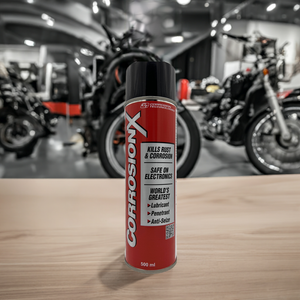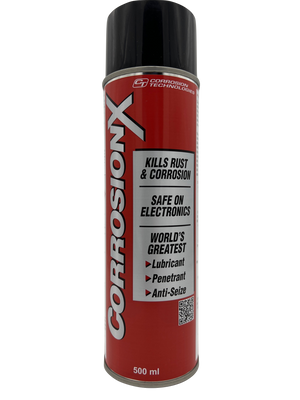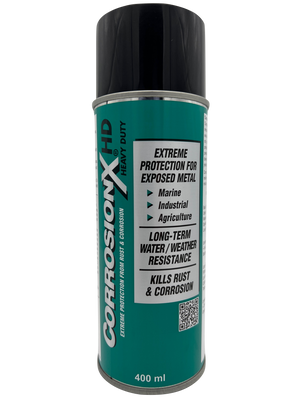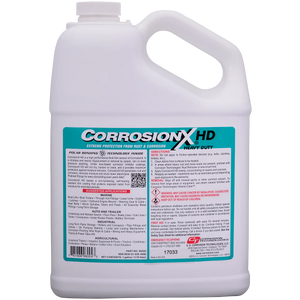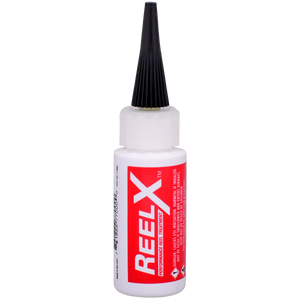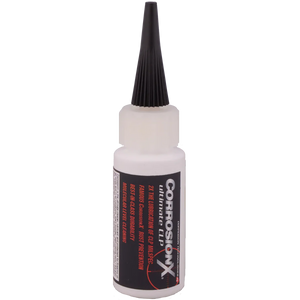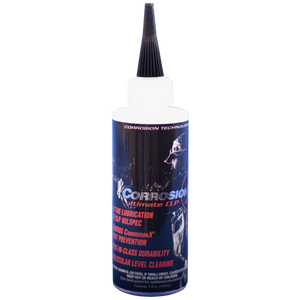Have you ever imagined standing on a frozen tundra with howling winds slicing through every layer of clothing? Now picture in that unforgiving environment, you have a critical job that depends on your firearm functioning flawlessly. In sub-zero temperatures, the stakes are high. Every moving part of your weapon is under assault from icy weather, moisture buildup, and the stubborn freeze of metal components that would rather just stay stuck. If you’re someone who operates (or dreams of operating) in the Arctic or other extreme cold regions, you need a solid grasp of why the cold wreaks havoc on firearms—and, more importantly, how to prevent it.
That’s exactly what we’ll dive into here. We’ll walk through the science of metal contraction, the disastrous effects of moisture, how the wrong lubricants could sabotage your mission, and, ultimately, why a specialized gun oil like CorrosionX stands out in this frozen battlefield. So grab a mug of something warm, settle in, and let’s unpack the secrets to keeping your firearm safe and functional in the coldest corners of the planet.
Metal’s Sub-Zero Dilemma: Contraction, Stress, and Friction
The Science Behind Metal and Cold
Let’s start with a mini science lesson: metals don’t love the cold, and firearms are almost entirely made of metal. When temperatures dip below zero, metal parts do this tricky little dance called contraction. Imagine a pair of jeans that fit you perfectly on a warm summer day, but in the middle of winter—bam!—suddenly they feel snug in all the wrong places. That’s essentially what happens with your gun’s metal components. Each piece, often composed of different alloys, shrinks at varying rates.
Now, you might ask, “Why does that matter?” Because in an ideal scenario, your firearm’s parts fit together with precise tolerances. Throw uneven contraction into the mix, and you can end up with tiny gaps or misalignments. When you finally fire the weapon, there’s a rapid burst of heat, causing sudden expansion. This hot-cold shuffle, repeated over and over, can lead to friction and stress that threaten your firearm’s reliability.
Stress and Micro-Fractures
You’ve probably seen metal fatigue in action before—think of bending a paperclip back and forth until it snaps. Prolonged operation in freezing weather puts a similar kind of stress on various parts of a firearm. This constant cycle of contraction and expansion can slowly create micro-fractures and wear-and-tear. It’s not like your barrel will split apart in one dramatic moment (although that can happen if things go really wrong). It’s more that the cumulative effect over time can degrade your firearm’s performance, accuracy, and overall safety.
Moisture Madness: Navigating the Ice-Rust Threat
The Sneaky Nature of Moisture
If metal contraction is a troublemaker, moisture is the ultimate villain lurking in the extreme cold. Whether it’s snow melting on a warm gun barrel, misty rain, or even your own perspiration that sneaks into the metal crevices, moisture is nearly unavoidable. Now, in extreme cold, water doesn’t just remain water—it can freeze into ice or transform into condensation when you move indoors. That means your weapon might go from warm and cozy to arctic-cold in a matter of minutes, leading to an endless cycle of freezing and thawing.
The Ice-Rust Cocktail
Think of moisture and freezing temperatures as a one-two punch. First, water seeps into minute gaps or rests on the metal surface. As temperatures drop, it forms ice, which can cause moving parts to stick or refuse to budge. Next, even a small temperature spike melts that ice, turning it into water once again. Water plus metal equals rust, and rust is basically the slow decay of your firearm. Over time, you’ll notice discolored surfaces, pitting, or even flaking metal. Once corrosion sets in, it’s like a termite infestation in a wooden house: it systematically weakens the entire structure.
The Big Oil Fail: Why Standard Lubricants Break Down in the Cold
Honey in a Freezer: The Viscosity Problem
Regular gun oil is formulated for moderate climates, where you’re not typically worried about the air hurting your face with razor-sharp cold. In the Arctic, that same oil can become thicker than honey left in the freezer. As temperature drops, the lubricant’s viscosity increases, meaning it gets goopy and sluggish. It stops doing the very job it’s meant to do: reducing friction between moving parts. You pull the trigger, and the hammer decides to take an extra second to respond—or worse, refuses to move at all. That’s a nightmare scenario if you’re in a life-or-death situation.
Jamming and Mechanical Failure
Once the lubricant thickens, your firearm can jam more easily. Parts like the firing pin, bolt carrier, and trigger assembly rely on smooth movement. Any thickened oil becomes a barrier, preventing these components from interacting as designed. The worst part is, this isn’t a problem you can always see. It might look fine at a glance, but the minute you try to fire, you realize your weapon is about as responsive as a sloth in a snowstorm. And that’s the last thing you need when every second counts.
The Arctic Warrior’s Secret Weapon: Specialized Gun Oil
Unfreezing Your Firearm’s Potential
In such extreme conditions, having a specialized gun oil is not just a good idea—it’s a necessity. Think of it like switching from generic sneakers to high-performance hiking boots when climbing a mountain. You need something designed for the terrain at hand. In a sub-zero climate, the main job of specialized oil is to keep parts from freezing up. This can’t be overstated. If ice forms between critical components, you might as well be carrying a metal sculpture rather than a functional weapon.
Battling the Elements
Beyond simply ensuring parts keep moving, a cold-weather gun oil provides a protective layer that fights corrosion. Picture it as a force field around your metal components, shielding them from water, ice, and nasty chemicals in the environment. Snowy or freezing rainy conditions may be beautiful to look at, but the combination of water and salt (common in some maritime or coastal Arctic zones) is the perfect recipe for rust. A premium gun oil built for these conditions is like having a personal bodyguard for your firearm, constantly on the lookout for moisture intruders.
What Makes CorrosionX a Champion for Maintaining Weapons in Extreme Cold
Superior Lubrication, Even When it’s Freezing
So, why all the fuss about CorrosionX for Guns? In short, it has been formulated specifically to keep performing under icy conditions that turn other lubricants into sludge. Imagine if you had a car that could start instantly at -40°F without any annoying rattles or stalls. That’s essentially what CorrosionX does for your weapon: it maintains a stable viscosity even in severely cold climates. This means you get consistent lubrication without the dreaded stickiness or freezing up that other oils suffer from.
The Anti-Corrosion Edge
One of the star qualities of CorrosionX is its anti-corrosion property. Remember the rust infestation problem we talked about? CorrosionX provides a persistent, water-repelling shield on metal surfaces, denying rust even the smallest chance to take hold. It’s like giving your firearm a permanent “umbrella” against moisture. If you’re operating in an area where blowing snow, freezing rain, or high humidity can creep into every crack, that “umbrella” is going to be worth its weight in gold.
Proven by the Pros
It’s not just weekend hunting enthusiasts singing CorrosionX’s praises. Various military units and law enforcement agencies that operate in punishing cold climates have tested and validated its effectiveness. When the professionals rely on a product day in and day out to protect lives and mission success, you know there’s some serious substance behind the brand’s claims.
Arctic Maintenance 101: Surviving the Environmental Gauntlet
The Brutal Reality of the Arctic
Operating in polar regions is no stroll through a winter wonderland. We’re talking about triple-layered clothing, frostbite risks, near-constant darkness in certain seasons, and biting winds that can lower the effective temperature even more. In these extremes, your firearm feels every bit of that chill. Wind can drive snow into every crevice, and just when you think you’re safe inside a tent or shelter, you deal with condensation forming on the metal. Regular checks and maintenance are your lifeline here.
Specialized Gear, Specialized Methods
While you might get away with standard gear in milder climates, the Arctic is a different beast. Every piece of equipment, from your gloves to your gun oil, must be designed for sub-zero performance. This extends to cleaning materials as well—rags and brushes that won’t freeze or become brittle, plus containers that won’t crack in the cold. All of this matters because even the simplest tasks, like wiping down a rifle, can turn into a huge challenge when your cleaning fluid has turned into a block of ice.
Freezing Temperatures vs. Gun Oil: How CorrosionX Defies Physics
The Viscosity Game-Changer
Imagine if you poured maple syrup on a pancake at room temperature—it flows nicely, covering every inch. Now picture that same syrup after you’ve left it outside in sub-zero weather—it’s going to ooze slowly, if at all. Standard gun oils behave similarly, losing their flow and becoming thick when the mercury plunges. CorrosionX, however, is designed to stay fluid in intense cold. This fluidity is crucial because it ensures all internal parts of your gun remain coated, preventing damaging friction.
Resistance to Solidifying
There’s another hidden benefit to CorrosionX’s specialized formula: it resists solidification. Standard oils may not fully freeze into an ice block, but they can get so stiff that you might as well be dealing with a solid substance. CorrosionX’s chemistry keeps it from thickening up to a point where it hinders firearm function. So, while your breath might be turning into ice crystals in the air, your gun’s lubricant remains reliably slick.
Moisture Be Gone: Beating the Condensation Conundrum
Indoor-Outdoor Shuffle
If you’ve ever worn glasses on a cold day and then stepped into a warm room, you’ve seen how quickly they fog up. Now, apply that principle to a firearm. Moving from an icy patrol outside into a heated cabin or vehicle causes condensation to form. That moisture has an annoying habit of finding every gap, screw head, and seam. If left unchecked, it can freeze once you head back out, or lead to rust if you stay warm.
CorrosionX as a Protective Force Field
CorrosionX combats this problem by creating a protective barrier on the metal’s surface. Think of it like a micro-thin raincoat that beads water off rather than absorbing it. Even if condensation forms, it’s less likely to interact directly with the bare metal. For best results, it’s still wise to give your firearm a quick wipe-down when transitioning between temperatures. But CorrosionX provides that extra line of defense, taking you from “Oh no, my gun’s all damp!” to “We’re good to go.”
A Step-by-Step Guide to Applying CorrosionX in the Arctic
1. Thorough Cleaning and Drying
Before applying any specialized gun oil, you need a clean slate. Disassemble your firearm (following the manufacturer’s guidelines, of course) and remove any old lubricant, grime, or residue. The next step is crucial—make sure every part is bone dry. Even a tiny drop of water or leftover cleaning solution can create a pocket of trouble once you’re in the freezing cold.
2. Thin, Even Coats
Less is often more when applying gun lubricants in sub-zero temperatures. Thick layers can collect dust, ice crystals, or other debris. Instead, apply a thin, even coat of CorrosionX to all the critical metal parts—barrel, bolt carrier group, firing pin, and any friction points you’ve identified. Use a lint-free cloth or a precision applicator to ensure uniform coverage.
3. Work the Mechanism
Once you’ve got your thin coat in place, gently cycle the action a few times. This helps the oil spread to every nook and cranny. Think of it like spreading jam across the bread’s surface—you want complete coverage, not clumps. Pay special attention to any part known to get sticky or jam up, such as the bolt assembly and trigger group.
4. Let it Set
Give the lubricant a moment to settle. This is especially important if you’re in a more moderate environment before you step outside. Allowing CorrosionX a little time to bond with the metal ensures maximum effectiveness. Trust me, you don’t want to rush this step. Think of it as letting the paint on a masterpiece dry before you put on the finishing touches.
Rust: The Invisible Enemy and How to Vanquish It
Why Rust Loves the Arctic
It’s easy to forget that rust can be just as prevalent in cold conditions as in humid tropical ones. Cold air might be dryer, but when you factor in frequent transitions between warm shelters and freezing exterior environments, moisture is constantly forming. Combined with potential salinity in the air (particularly if you’re near coastlines) and the inevitable condensation, the Arctic can become an incubator for corrosion.
The CorrosionX Shield
CorrosionX offers a long-term shield that greatly reduces your gun’s susceptibility to rust. The protective coating stands firm even if you’re trekking through blizzards or submersing your weapon in snowbanks. By actively displacing moisture and sealing the metal, it puts a big neon “Keep Out!” sign up for rust. This not only keeps your gun looking pristine, but also ensures its internal integrity remains intact for years to come.
Long-Term Savings
Let’s be real: firearms are an investment. Whether you’re a collector, a hunter, or a member of the armed forces, you’ve put time and money into getting the perfect weapon. Protecting it from rust means fewer replacement parts, fewer professional cleanings, and a longer overall lifespan. In the grand scheme of things, a premium cold-weather lubricant like CorrosionX can save you a pile of cash—and headaches—over the lifetime of your firearm.
Essential Tips and Tricks for Reliable Arctic Operations
1. Regular Ice Checks
Even with the best lubricant, ice can still form in extreme conditions—especially around the muzzle or in tight corners. Make it part of your routine to check for ice buildup. A quick inspection can be the difference between a flawlessly operating gun and a jam at a critical moment. If you find ice, gently remove it without forcing any parts. Think of it like chipping away at frost on your car’s windshield—patience and a gentle touch are key.
2. Keep It Dry and Covered
Whenever possible, protect your firearm from direct snow and rain. A sturdy, well-fitted cover or even a waterproof bag can reduce the amount of moisture assaulting your weapon in the first place. If you do get snow or water on it, take the time to wipe it down. A small, absorbent cloth in your kit can be a lifesaver. This routine care might feel like an extra chore, but it pays off by preventing bigger problems down the line.
3. Avoid Over-Lubrication
We touched on this earlier, but it’s worth reiterating: more oil is not always better. In extremely cold conditions, too much lubricant can trap debris or even congeal if the product isn’t cold-weather-rated. Always follow the recommended guidelines for applying CorrosionX—or any specialized oil, for that matter. A light, thorough coat is your friend, ensuring maximum protection without the risk of creating a sludge fest inside your firearm.
4. Store Your Gun Properly
If you’re not using your firearm for a stretch of time, make sure it’s stored properly. In Arctic scenarios, you might opt for a specialized gun case with desiccant packs to absorb moisture. Keep it in an environment that has some temperature control, if possible, to prevent condensation. Proper storage ensures you’re not greeted by unwelcome rust or frozen components the next time you reach for your weapon.
5. Routine Function Checks
Set aside time for regular test-fires if the situation allows. Even a few dry fires or cycling rounds can help you detect any drag or unusual resistance. It’s much better to discover an issue on a training run than in the middle of a critical operation. Just like you test an emergency generator periodically, your firearm deserves the same diligence in the Arctic.
Final Thoughts: Why Arctic Reliability Is Non-Negotiable
Operating in the Arctic is not just an exercise in resilience; it’s a high-wire act where nature itself is your most formidable opponent. Bitter cold and moisture can turn top-grade firearms into paperweights faster than you can say “frostbite.” But by understanding the science of metal contraction, recognizing the relentless threat of moisture, and using a specialized lubricant like CorrosionX for Guns, you’re giving your weapon—and yourself—one massive advantage in these conditions.
Reliability in sub-zero temperatures can literally be a matter of life and death. Whether you’re part of a military unit, a law enforcement agency, or an adventurous hunter exploring remote icy landscapes, having a dependable firearm can mean the difference between mission success and mission failure. The Arctic doesn’t forgive mistakes easily. If you overlook proper maintenance, the environment will punish you for it.
By incorporating a few smart habits—like diligent cleaning, using the right protective gear, applying specialized oil, and performing routine checks—you significantly reduce the odds of a catastrophic jam or rust outbreak. CorrosionX isn’t just another gun oil; it’s your ally against the harsh realities of cold weather. It remains fluid when everything else freezes, repels moisture like a raincoat, and maintains the internal health of your firearm over time.
So, the next time you’re prepping for Arctic conditions, don’t underestimate the power of solid gun maintenance and the right lubricant. Pack those extra gloves, layer up with thermal gear, and, most importantly, treat your firearm to the specialized care it deserves. That way, when the temperature plunges and the wind screeches, you’ll have the confidence that your weapon is ready for anything—because in the ice kingdom of the far north, reliability isn’t just a preference; it’s the law of survival.


